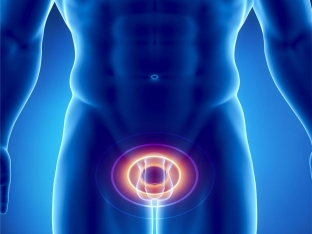The human body – it is a complex machine driven by the heart. This unique organ, which operates in an "automatic" mode, by the force of its ejection pushes blood to all organs and tissues in the human body. Arterial blood saturated with oxygen is carried by the arteries, and venous blood already saturated with carbon dioxide returns through the veins to the heart. Then it is again enriched with oxygen, & nbsp; and the cardiac cycle repeats again. Throughout a person's life, such cycles are repeated billions of times, and the system works smoothly if the body is healthy. But the vessels through which blood flows can also hurt, and one of the most dangerous manifestations of their pathology is venous congestion.
Symptoms of venous congestion in the pelvic organs in men
As you know, the organs of the genitourinary system have a large number of blood vessels and very well supplied with blood. Due to various pathological conditions in the pelvis, venous congestion may occur in the urogenital venous plexus. As a result of such stagnation, degenerative changes develop in the organs of the reproductive system, leading to reproductive and sexual dysfunctions, as well as urination disorders. This condition of the body is called a congestive disease, and very often the disease occurs in males.
Venous stasis:
- why does venous stasis develop in the pelvis;
- what happens in the pelvic organs during venous congestion;
- Clinical presentation of venous stasis: symptoms in men.
Why does venous stasis develop in the pelvis
The development of venous congestion in the genitourinary venous plexus of the male body may be due to the influence of such etiological factors as:
- reticulate form of the structure of the urogenital venous plexus, which predisposes to stagnation;
- weakness of the walls of the veins, underdevelopment of the muscular-elastic elements or insufficiency of the venous valves;
- thrombophlebitis and pelvic vein thrombosis;
- pelvic injury;
- injuries of the spine and spinal cord, which resulted in a violation of the innervation of the pelvic organs;
- diseases of neighboring organs;
- neoplasms and metastases in the pelvis.
What happens in the pelvic organs during venous congestion
Under the influence of the above etiological factors, functional changes occur in the small pelvis, the vessels of the urogenital plexus expand, blood flow slows down in the small pelvic organs, a sufficiently large volume of blood is turned off from circulation. Subsequently, dystrophy and sclerosis of the walls of the venous vessels of the urogenital venous plexus develops, as a result of which persistent congestion occurs in the pelvic organs. The processes of microcirculation and transcapillary exchange worsen, favorable conditions are created for delaying infection and the development of phlebitis and thrombophlebitis, congestive pathologies of the genital organs develop, against the background of which inflammatory processes quite often occur. Venous congestion in the urogenital venous plexus can lead to very serious and dangerous complications.

Clinical presentation of venous stasis: symptoms in men
In the clinical picture of venous congestion in the pelvic organs in men, pain and dysuric syndrome, as well as disorders of the genital organs, predominate. The symptomatology depends on in which organs of the small pelvis the congestion is more pronounced. Pain during venous congestion in the small pelvis occurs in the perineum, in the groin, above the pubis, in the testicles, appendages, urethra and other structures of the small pelvis. The pain is diffuse and aching in nature, aggravated after prolonged sitting or being in an upright position. Dysuric manifestations occur in the form of nocturia, pollakiuria, sensation of a full bladder. In addition, patients complain of a decrease in libido, accelerated ejaculation, sluggish ejaculation, as well as spontaneous and sometimes painful erections, that disappear after emptying the bladder or rectum. The appearance of such symptoms may indicate the development of venous stasis in the pelvis.







Add a comment